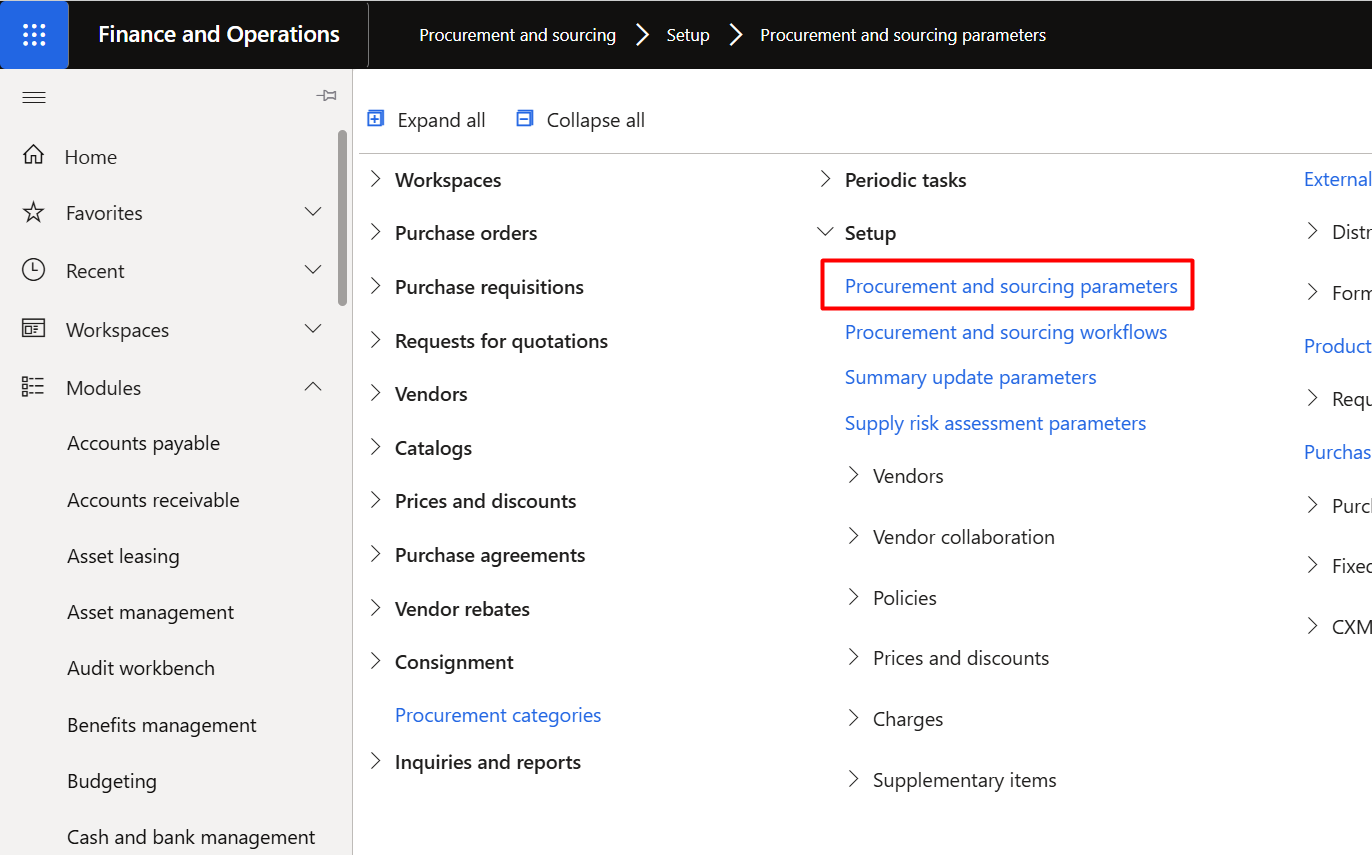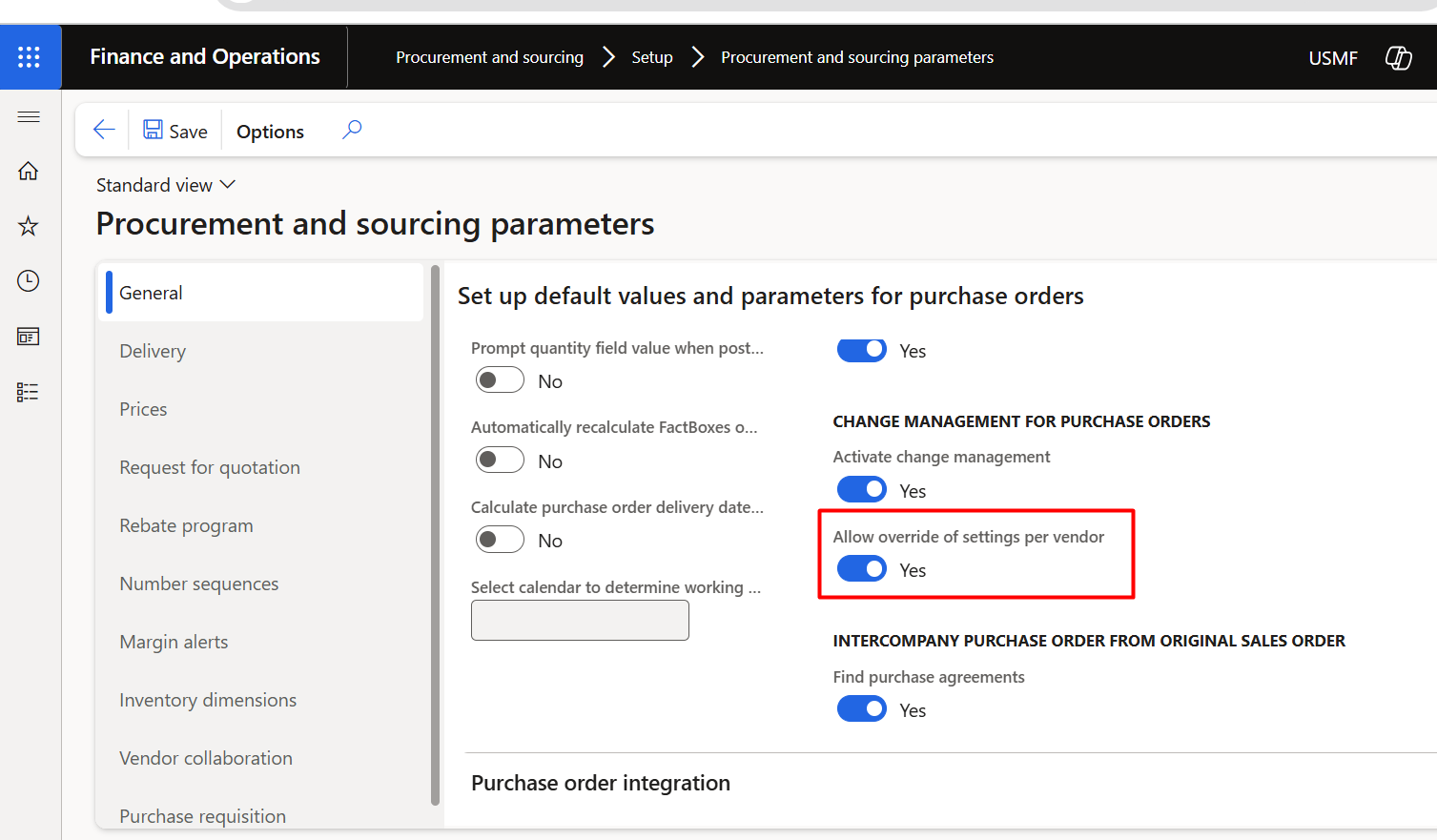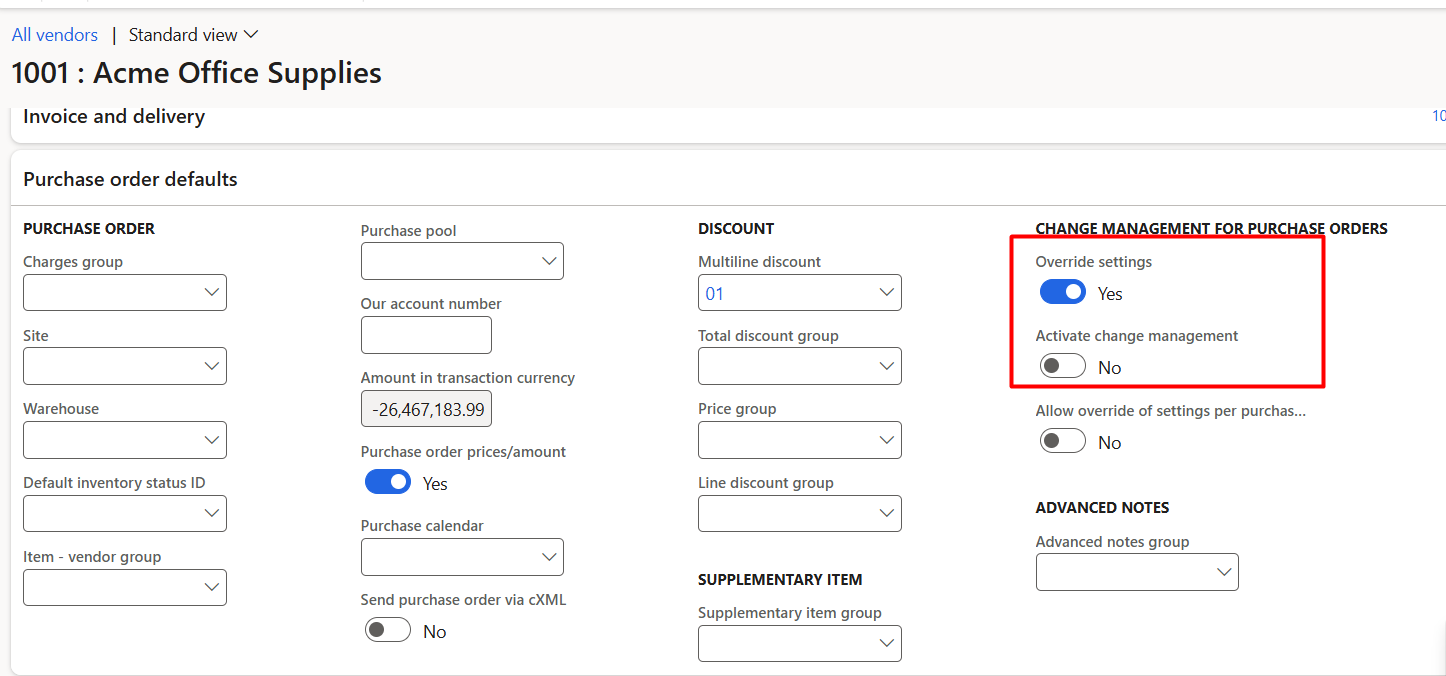- Most to organization enable the functionality of “Change Management” for Purchase order in their procurement process.
- In Some cases change management is not required for specific vendors.
- For this functionality Microsoft provide the functionality to override vendor functionality. Following is walkthrough.
- In Pocurement parameters (Procurement and sourcing> Setup> Procurement and sourcing parameters, tab Default values and parameters in the section General) there is option for disable functionality by setting true / Yes for “Allow overright of settings per [[Vendor]]


- Now go to Vendor details form

- Open in tab “Purchase Order defaults” and
- set Override settings to “yes” and
- set Activate change Management to “No”.
- Hope you like this log style blog post from Roam Research.
D365
Locations in Asset Management in D365 Finance and Operations. Asset Management Part 1
In this series of blog , I am going to share the functionality of Asset management in D365 Finance and Operations.
In first blog post I described the concept and option of location in D365 Finance and Operations.
So what is functional location.
Functional locations are places where assets can be installed. These locations can be hierarchical. Let’s say we have a head office building that has 10 rooms: 2 conference rooms and 8 halls. Every hall has one printer and four desks, and on each desk, one laptop or computer is placed.
In some cases, locations don’t have assets directly installed on them. For example, the head office did not have assets directly. But every hall inside the head office building can have assets installed. For this reason, we can disable the Create asset on location option in Asset Type.
Followings are points why we need asset maintenance on location.
- We can define asset maintenance at a specific location.
- We can get the total cost for a specific location.
- We can get the total Item consumption for a specific location.
- Even so, we can get a list of Work orders and maintenance requests for a specific location.
- List of faults that occur at a specific location.
Location Lifecycle state:
Asset management > Setup > Functional Location > Location Lifecycle state:

The life cycle state defines the current state of an asset. There are multiple properties defined for the location state.
Functional Location Action toggle button If we enable yes, then this location will be in an active state.
create Asset toggle button: if this button is enabled to yes, it means we can create assets on location.
Allow Rename the location. If this property is true, then we can rename the location. Otherwise, it is not possible to rename the location.
New sublocation toggle button: In the case of property, location will allow new sublocations. When a location is in this state, we can add sublocations to assets.
Install asset at location toggle button: this state ensures that assets can be installed at location. Sometimes we have hierarchical locations and cannot install assets at those locations.
Delete functional location. if the location this state, where this option is true, we can delete the location.
Asset State: Asset state, means when ever asset is installed on this location, it will change to assigned that state.
Based on our need we can make new life cycle state and we can set above mentioned properties to play with these.
Currently I select only three life cycle states for example, New, active and Ended.

Location life Cycle model:
Life Cycle model helps us to define behavior of states.
Asset management > Setup > Functional Location > Location Lifecycle Model.

For example, the above screenshot can be explained in the following way:
- The active state can be converted into an ending state.
- When Any location is in an end state, that is, a final state, it cannot be converted to another state.
- A new state can be converted into an active state; we cannot convert it into an ending state.
We can define the life cycle model based on our needs by adding more life cycle states and enabling and disabling different toggle buttons for each state.
Location Type:
Location Type helps us make a template. There is a possibility we have similar types of locations. And these locations can have similar characteristics.
You can find location Type with below navigation path.
Asset management > Setup > Functional Location > Location Type

Location type:
On location type, we can define the functional location life cycle model. It is automatically copied to the location when we create a location.
The toggle button for allow Multiple assets allows you to install multiple assets.
We can also enable or disable the update asset dimension allowed on assets (this function is not working because of some missing functionality).
Then some fields are just counters for the number of asset types installed on location, the count of permitted location types, etc.
The system will then determine which types of assets are permitted to be located. For example, in the office hall, we can install a printer, laptop, and photocopier. We cannot install a forklift in the office hall.
If we do not define any asset type here, then the location will be open for all types of assets.
Maintenance Plan:
We can also define a maintenance plan based on location. Most of the time, every asset has a different maintenance plan. We usually do not use this feature. But where can we define a maintenance plan? That is applicable to all assets.

Permitted type Tab.
In the system, we can define hierarchical locations; for example, the head office can have a hall room and a conference room. Head office cannot have another building or factory as a child. Here we can define Allow location types in this tab.

Asset Attribute requirements
We can also define asset attribute types on functional locations type. For example color of Red. This option did not validate on location as well as asset.

Conclusion: We can define location types. In some implementations, locations are not important. For these, we can define a default location, and we set this in the Asset Maintenance parameter page. When an asset is created, it automatically picks the default location.
For further Inquiry
email alirazazaidi@live.com
Cell Number+971555128359
How to apply application hot fix on Dynamics 365 for finance and operations
Hi a couple of days ago, I got chance to apply application hot fixes required to apply on cloud dev environment.
So I made this very short post.
First Step:
Check in all changes in TFS and make sure no error in AOT.
Second step:
You need to download hot fix from LCS.
Third Step:
To download vm RDP file and credential from LCS and login in VM.
Fourth step:
Open visual studio with run as admin.
Then from Dynamics 365 menu click on addins and from contex menu click on hot fix.
fifth Step:
Extract the zip file and extract the hot fix file and load into dialog. Also set TFS settings.
Apply And in couple of second patch is applied
Sixth Step:
After path applied, Synchronization database from Dynamics 365 menu.
Seventh Step:
Check all compile model, Make sure that all models are check in.
Eighth Step:
Resolve error in the case errors occurs,
In my case no error occurs.
9th step:
Check in everything into TFS with hot fix name in comments.






